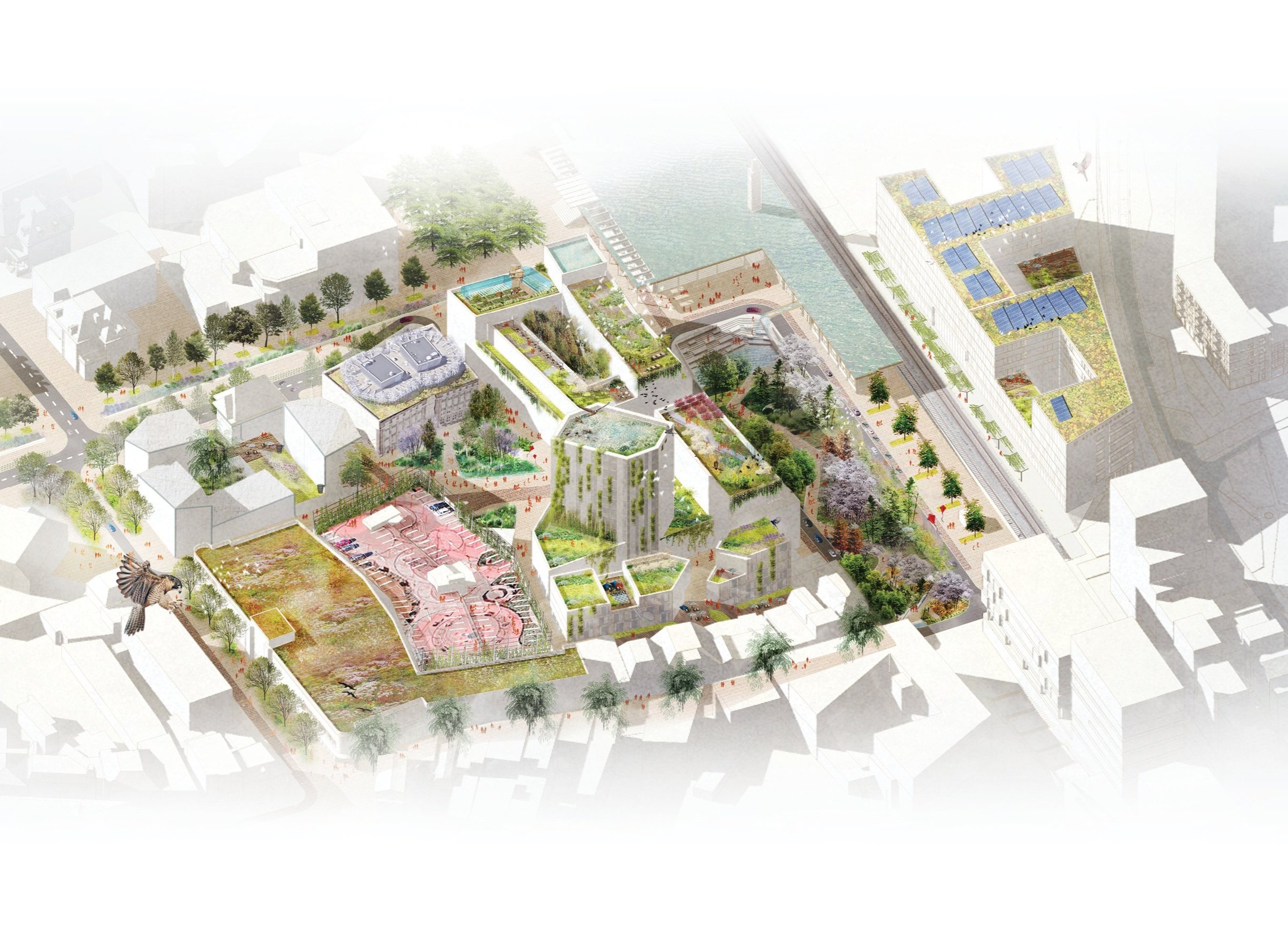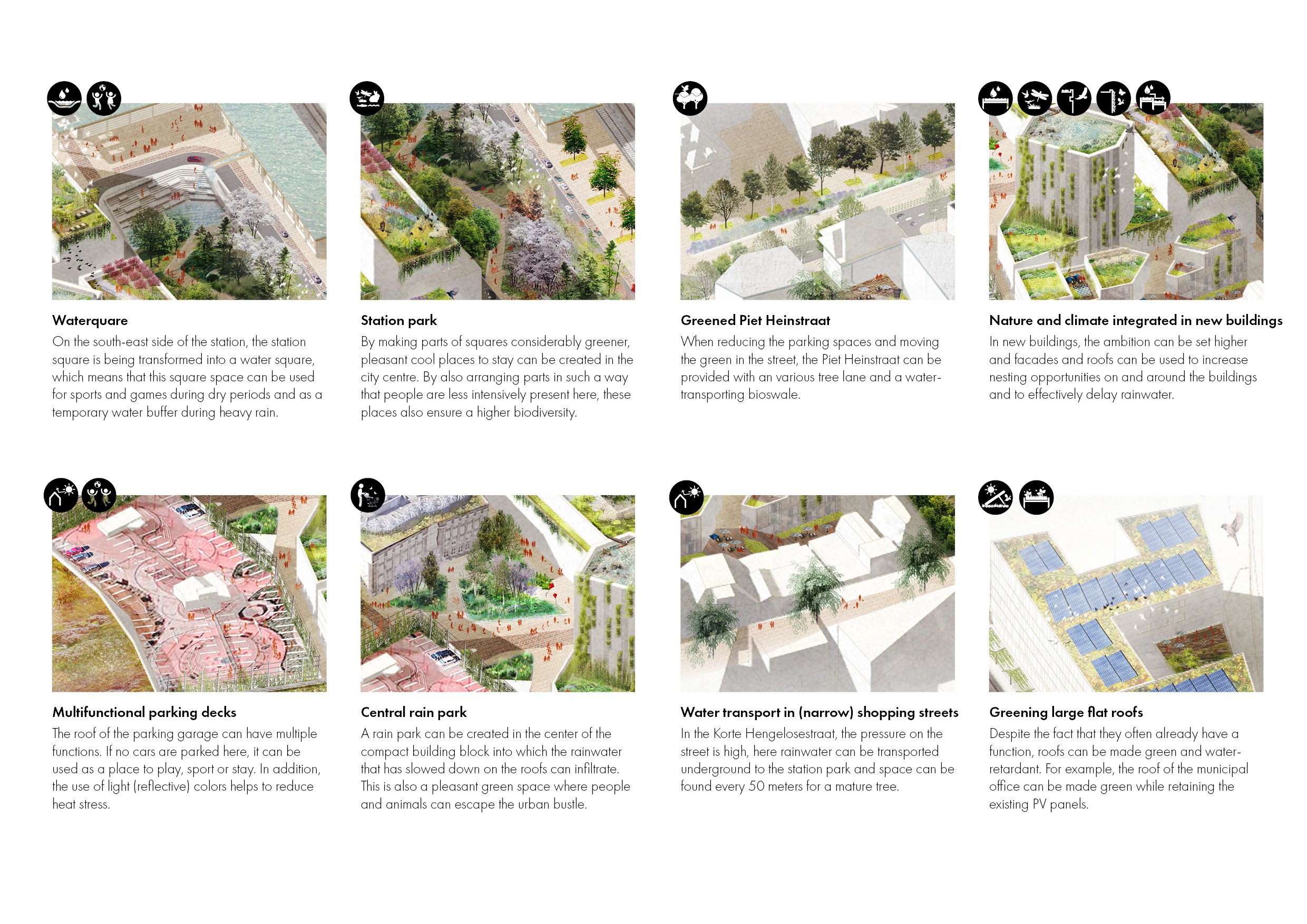
Centrumkwadraat Enschede
Enschede, Overijssel, The Netherlands
Location | Enschede, Overijssel, The Netherlands
Year | 2021 - 2022
Client | Province of Overijssel, Enschede municipality
Status | Provincial strategy document, Finished
Downloads | Full report (in Dutch)
Nature-inclusive and climate-adaptive measures can make an important contribution to increase the quality of life and help making cities more “future-proof”. The province of Overijssel and the municipality of Enschede asked De Urbanisten to create climate-adaptive and nature-inclusive principles can be used in tackling the nature and climate challenge in the city and to apply these principles within a case study to the Centrumkwadraat in Enschede.
Municipalities face a tough and complex task; there is a great need for sustainable developments that are climate adaptive, help recover our biodiversity and integrally include themes as (renewable) energy, health and mobility. Municipalities in the province of Overijssel also face this task and are already fully engaged in it. So is the municipality of Enschede. To support these developments, the province of Overijssel, together with the municipality of Enschede, asked De Urbanisten to create climate adaptive and nature-inclusive principles that are applicable in urbanized areas. These principles can be used in tackling the nature and climate challenge in the city. Municipalities can use these principles for the design of public spaces and their built environment.
De Urbanisten has put together a toolbox with principles which can be used in tackling the nature and climate challenge in the city, and the Centrumkwadraat in Enschede in particular. It appears that a combined application of measures has the most effect and contributes to an attractive living environment (for humans and animals) as much as possible. Within the research, we distinguished a number of city types with different spatial characteristics, which also require different nature and climate principles. Each of these city types is linked to an appropriate set of principles.
Urbanization is not a task of only building. The densification of the city will have to go hand in hand with a quality impulse that increases the quality of life and helps “future-proofing” the city. Nature-inclusive and climate-adaptive measures that focus on public space and the built environment can make an important contribution to this. By linking individual interventions to each other, systems are created and the impact grows.
A nature-inclusive living environment protects and develops ecologically valuable places and connections throughout the urban fabric. In addition to increasing biodiversity, nature development in the city ensures a better climate, higher water quality and improves the well-being of the inhabitants. Climate change causes greater weather extremes, such as heavy rainfall, long(er) periods with high temperatures and periods of drought. This has consequences for our living environment and requires adaptation. Important themes within climate adaptation are flooding, heat stress and drought.
The last part of the study zooms in on the station quarter of Enschede. Here, research by design has been done to visualize how nature and climate principles can be applied and what added values can be achieved. Also we show a few perspectives for the Stationskwartier, which can inspire designers and other stakeholders to get started with our toolbox and contribute to a climate-adaptive and nature-inclusive city.











